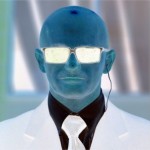As always some backgrounding is necessary herein to help the 'medicine' go down as it were. In August 2012 French journalist, activist and founder of the Voltaire Network Thierry Meyssan, in an article cogently titled "Perfecting The Method of 'Color Revolutions': Western leaders slip back into childhood", tells the story of an alliance between social scientist Gene Sharp, and the then chief psychologist of the Israeli Army, a Colonel Reuven Gal.
Sharp's game-plan entailed a mash-up of the theories of Gustave Le Bon -- whose seminal 1895 book on crowd psychology The Crowd, The Study of the Popular Mind was influential in the later development of public relations, propaganda and 'psy-ops' -- and those of Sigmund Freud. After first noting it was Sharp who both masterminded and 'ring-mastered' the failed Beijing putsch (after the protest movement was quelled and order restored, Deng reportedly arranged for Sharp to be promptly 'escorted' back to where he came from, leading us to speculate on his probable fate if he'd attempted the 'T-Square' gambit during the Mao era), Meyssan then observes,
'On this basis, Sharp and Gal set up training programs for young activists with the objective of organizing coups. After a few successes in Russia and the Baltics, it was in 1998 that Gene Sharp perfected the method of the "color revolution" with the overthrow of Serbian President Slobodan Milosevic.'
Now it's uncertain if Sharp had in mind a key Le Bon maxim, 'the masses have never thirsted for the truth. Whoever can supply them with illusions is easily their master. Whoever attempts to destroy those illusions is always their victim', when he developed his theories. But given the way things have evolved it seems he might have factored it in; one could say it is even woven into the fabric of the whole 'psy-ops' methodology underpinning the color revolutions. The subsequent -- albeit varying -- success of later revolutions of this type may be testament to that.
Either way, along with drawing on Le Bon's broader, deeper insights, Sharp determined it may be possible to exploit Freud's famous theory of the "Oedipus complex" and incite groups (or crowds) of people to oppose a head of state, as an archetypal father figure.
For reasons that will become evident shortly (at least for those who haven't already determined where this is going), it seems safe to say that in the process Sharp went on to exercise a measure of influence on the geopolitical scene that belies his relative obscurity. That said, considering the sub-rosa nature and purpose of his work -- and considering the likely motives of those upon whose behalf he was invariably acting -- this is hardly surprising. To be sure, his 1973 The Politics of Nonviolent Action marked him out as the leading exponent of the use of non-violence in covert political power projection and the techniques and dynamics that might exemplify such.
But it was his seminal 1985 paper called "Making Europe Unconquerable: The Potential of Civilian-Based Deterrence and Defence", that for successive U.S. governments and their intelligence agencies became the 'go-to' playbook for regime change, one that would eventually morph into what is now called 'color revolutions', although the word "revolution" is something of a misnomer. As Meyssan observes,
'A genuine revolution entails an upheaval in social structures that takes place over several years, while a "color revolution" is a regime change that occurs within weeks'.
In short, the "color revolution" was the fast-food equivalent of the Real McCoy. Either way Sharp virtually invented the 'phenom', which sought to apply more sophisticated, under the radar approaches to the task of removing undesirable (read: "uncooperative") governments and their leaders than perhaps the ones exemplified by Iran and Guatemala, along with numerous others that followed in their wake.
Next Page 1 | 2 | 3 | 4 | 5 | 6 | 7
(Note: You can view every article as one long page if you sign up as an Advocate Member, or higher).





